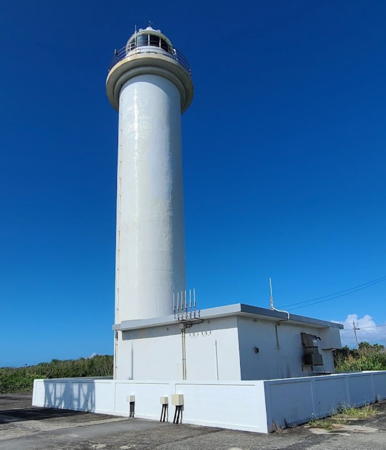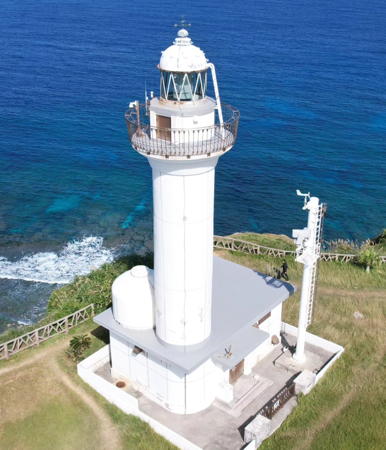The nation of Japan, known in Japanese as Nihon or Nippon (日本), occupies an archipelago off the east coast of Asia. The four main islands are Hokkaidō in the north, Honshū (the largest), Shikoku in the south, and Kyūshū in the southwest. The country includes thousands of other islands of all sizes; among them the Ryūkyū (Nansei) Islands are a long chain extending to the southwest and including the large island of Okinawa, and the Nanpō Islands are another long chain extending south into the Pacific Ocean. Much of Japan is mountainous but the coastal regions are densely populated and urbanized; the country's population is about 126 million.
Okinawa Prefecture, one of the 47 prefectures of Japan, includes the southern half of the Nansei (or Ryūkyū) Islands (Nansei-shotō or "southwest islands" in Japanese). There are two main groups of islands: the Okinawa Islands, including the principal island of Okinawa itself, and the Sakishima Islands to the southwest. This page includes lighthouses of the Sakishima Islands and there is a separate page for the lighthouses of the Okinawa Islands.
Okinawa was the home of the Ryūkyū Kingdom, established in the early 1400s. In 1609 the islands were conquered by Japan, and thereafter the Ryūkyū Kingdom paid tribute to both Japan and China. Japan annexed the islands in 1879 over Chinese protests; U.S. President Ulysses Grant, called in as arbitrator, ruled in favor of Japan. At the end of World War II in 1945 the Ryūkyū Islands from the Tokara group southward came under U.S. control, at first under a Military Government and then after 1950 under a Civilian Administration. The Okinawa and Sakishima Islands remained under U.S. control until the U.S. ceded sovereignty over all of the Ryūkyūs back to Japan in 1972.
In Japanese the word for a lighthouse is tōdai or toudai (灯台). The words saki and misaki are for capes and headlands, hana ("nose") is a promontory, hantō is a peninsula, shima (also spelled sima or jima) is an island, bae is a reef, iwa or shi is a rocky reef, amase or se is a shoal, wan is a bay, nada is a sound or basin, kaikyō is a strait, kawa is a river, and kō or minato is a harbor.
Lighthouses in Japan are operated and maintained by the Japanese Coast Guard's Maritime Safety Agency. The Eleventh Coast Guard Region covers Okinawa Prefecture and the Coast Guard Office at Ishigaki is responsible for lights in the Sakishima Islands.
ARLHS numbers are from the ARLHS World List of Lights. JCG numbers are the Japanese Coast Guard's light list numbers. Admiralty numbers are from volume M of the Admiralty List of Lights & Fog Signals. U.S. NGA List numbers are from Publication 112.
- General Sources
- Lighthouse of Japan - Okinawa
- This large and expanding site currently has photos and accounts for lighthouses of the Sakishima Islands.
- Lighthouse Visits - 7000-7300
- Another excellent source of photos of Japanese lighthouses.
- Lighthouses of Okinawa Prefecture
- Photos by various photographers available from Wikimedia.
- Online List of Lights - Japan - Nansei Shoto
- Photos by various photographers posted by Alexander Trabas. Darlene Chisholm and Jonathon Post (Selector Jonathon Photography) have contributed several photos from Ishigaki.
- Google Maps
- Satellite view of the islands.

Henna Saki Light, Miyakojima, November 2021
Google Maps photo by Nagamu Asakura



